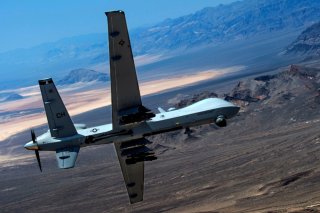The Pentagon Has Its Eyes on a New Drone
The Pentagon awarded development contracts to two of America’s unmanned aerial vehicle heavyweights to develop a new UAV as soon as next year.
The United States Department of Defense has awarded development contracts to Kratos Unmanned Aerial Systems and General Atomics Aeronautical Systems to develop an Off-Boarding Sensing Station (OBSS) for unmanned aerial vehicles (UAVs).
Both contracts, which were awarded separately, cover “the design, development, and flight demonstration in an open architecture aircraft concept to achieve the goals of rapid time-to-market and low acquisition cost,” with both companies’ work anticipated to be completed by October 31st, 2022. The Department of Defense awarded both companies about $17.7 million each and included an option for the companies to increase their payouts to just under $32 million.
Kratos’ Off-Boarding Sensing Station
Kratos’s statement regarding the award explains that the OBSS will be an entirely new unmanned aerial system. However, like Kratos’s other offerings, it is “intended to be an affordable, highly modular conventional takeoff and landing jet-powered” aerial vehicle.
While details on the new UAVs are murky, Kratos asserted that the “OBSS solution incorporates innovative manufacturing techniques that enhance its ability to not only provide significant performance for sensor extension missions for manned jet aircraft but also will accommodate significant offensive weapons volume to also act as a weapons bay extension for manned aircraft.”
Furthermore, the OBSS is “a new addition to the Kratos family of low-cost Autonomous Collaborative Platforms (ACP) designed to employ weapons, sensors, and other effects that generate affordable, force multiplier combat power with a forward force posture.”
General Atomics’s Off-Boarding Sensing Station
Even less is known about General Atomics’s OBSS. However, the company has a very long track record building unmanned aerial vehicles and has been a prolific designer of UAVs over the last several decades.
General Atomics’s legendary Reaper and Predator drones made their combat debuts during America’s recent conflicts in the Middle East. More recently, General Atomics unveiled the new Predator C Avenger. Powered by a single jet engine buried in the platform’s fuselage and featuring a stealthily designed fuselage, General Atomics calls this Unmanned Aircraft System (UAS) the next generation in remotely piloted aircraft.
General Atomics has also participated in the U.S. Air Force’s Skyborg program, an effort to develop low-cost unmanned aerial platforms capable of flying alongside manned aircraft. Flying in tandem, these expendable aircraft would fly far ahead into contested airspace, finding and assessing threats. In some cases, armed unmanned vehicles could also eliminate threats on their own.
Both General Atomics and Kratos will have to submit prototypes by next year. However, if they exercise the additional funding option, they will have until early 2024 to finalize designs.
Caleb Larson is a multimedia journalist and Defense Writer with the National Interest. He lives in Berlin and covers the intersection of conflict, security, and technology, focusing on American foreign policy, European security, and German society.
Image: Reuters

